Compton Herbarium
Sceletium tortuosum (L.) N.E.Br.
Family:
Common names: kanna, tortuose fig marigold (Eng.); kanna, kougoed, tandtrekbos (Afr.); kanna (Khoi)
Plant Attributes:
Plant Type:
SA Distribution:
Soil type:
Flowering season:
PH:
Flower colour:
Aspect:
Gardening skill:
Special Features:
Horticultural zones
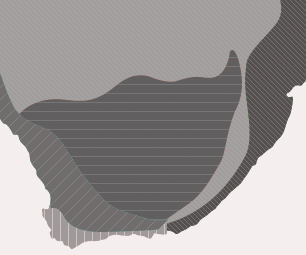
Satyrium coriifolium Sw.
Family:
Common names: golden satyr orchid (Eng.); ewwa-trewwa, goue-trewwa, ouma-trewwa, rooi-trewwa (Afr.)
Plant Attributes:
Plant Type:
SA Distribution:
Soil type:
Flowering season:
PH:
Flower colour:
Aspect:
Gardening skill:
Special Features:
Horticultural zones

Roella L.
Family:
Common names:
Species

Roella amplexicaulis Wolley-Dod
Erect, rigid. Leaves crowded, imbricate, recurved, rotund-ovate, sharply serrate on the upper part, ciliate on the lower, apiculate. Bracts orbicular. Flowers white or pale blue, 3-8 in terminal heads. Flowering from November to April. Distribution and habitat: Endemic to the Cape Peninsula, on sandstone slopes.
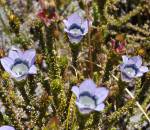
Roella ciliata L.
Erect or sprawling. Leaves linear, ciliate, axillary clusters of smaller leaves present. Flowers white or blue with a dark ring or spots on lobes, the dark part often edged with white, terminal, solitary, bell-shaped. Flowering from August to March. Distribution and habitat: Cape Peninsula to Caledon where it grows on stony slopes or sandy flats.
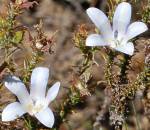
Roella prostrata E.Mey. ex A.DC.
Erect or sprawling. Leaves linear, ciliate, midrib prominent beneath, axillary clusters of smaller leaves present. Flowers white or pale blue, solitary at branch tips. Flowering from December to March. Distribution and habitat: Hopefield to Caledon, on sandy flats.
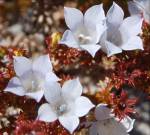
Roella recurvata A.DC.
Erect, branching from the base. Leaves crowded, imbricate, spreading or recurved, elliptic, apiculate, ciliate, slightly decurrent. Bracts leaf-like, recurved. Flowers white or blue, solitary at branch tips. Flowering from January to February. Distribution and habitat: Endemic to the Cape Peninsula, on sandy flats.
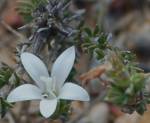
Roella spicata L.f.
Erect or diffuse. Leaves crowded, linear, axillary clusters of smaller glabrous leaves often present. Bracts leaf-like, broad at the base. Flowers white, in terminal or lateral heads aggregated into a spike-like inflorescence. Flowering from January to March. Distribution and habitat: Genadendal to Port Elizabeth where it occurs on rocky mountain slopes.
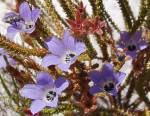
Roella triflora (R.D. Good) Adamson
Erect with ascending branches. Leaves linear, ciliate near the base, toothed on the upper part, axillary clusters of smaller leaves present. Bracts finely hairy, margins with stiff wire-like hairs. Flowers pale blue with a dark band at the base, solitary or in groups at branch tips. Flowering from December to April. Distribution and habitat: Endemic to the Cape Peninsula where is occurs on sandy lower slopes.

Roella uncinata Cupido
Perennial herb, tufted, up to 10 cm tall. Leaves linear, uncinate, scattered to densely imbricate, glabrous, margins ciliate, 1 or 2 pairs of teeth near apex; bracts leaf-like. Flowers 1 –4, terminal, white or pale blue. Flowering from November to February. Distribution and habitat : Endemic to Hermanus where it grows on sandstone slopes.
Plant Attributes:
Plant Type:
SA Distribution:
Soil type:
Flowering season:
PH:
Flower colour:
Aspect:
Gardening skill:
Special Features:
Horticultural zones

Rhigiophyllum squarrosum Hochst.
Family:
Common names: none recorded
Plant Attributes:
Plant Type:
SA Distribution:
Soil type:
Flowering season:
PH:
Flower colour:
Aspect:
Gardening skill:
Special Features:
Horticultural zones

Pyrrosia Mirb.
Family:
Common names: felt ferns
Species

Pyrrosia africana is restricted to the eastern coastal regions of South Africa, extending northwards to southern Mozambique. The specific epithet is therefore somewhat misleading as it suggests the species occurs widely in Africa. Although the species mostly occurs as a low to medium high epiphyte in seasonally moist evergreen coastal forests, it often extends to the KwaZulu-Natal midlands, occurring at an elevation of approximately 700 m. The species also grows on rocks in forests. Pyrrosia africana has a rhizome up to 4 mm in diameter with fronds arranged dorsally on it. The short phyllopodia to which the fronds are attached, are up to 25 mm apart. The rhizome grows on the surface of the growing medium and is initially closely set with reddish brown scales, but soon becomes bare.

The small round sori, up to 2 mm in diameter, occur closely on the upper half of the fronds.
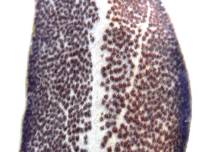
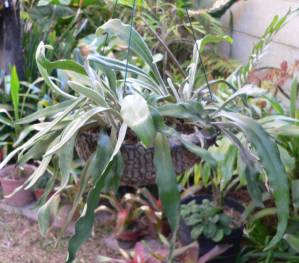
Pyrrosia schimperiana var. schimperiana is widely distributed in the tropical parts of Africa, occurring from West Africa to Ethiopia and southwards to Angola and Zimbabwe. The species has a restricted distribution in South Africa and is confined to the Blyde River Canyon and Mariepskop in Mpumalanga. Although the species also occurs as a low-level epiphyte, it often occurs in rock crevices on exposed and shaded cliffs, but never in deep shade. This species is named after the Strasbourg Professor of Botany, W.P. Schimper (1804-1878), who collected plants in various parts of Africa, particularly Ethiopia.
The rhizome of P. schimperiana grows up to 2 mm in diameter and is also not as widely creeping as that of the former species. The fronds are borne up to 10 mm apart and are firmly herbaceous, but not as leathery as that of the former species.
Both frond surfaces of this species remain densely covered by stellate hairs, giving the plant a greyish colour. The fronds grow up to 180 x 25 mm. The fronds of both species are poikilohydrous (frond turgidity varies in accordance with the available habitat moisture: fronds will roll up when dry and unfold when moisture levels increase).
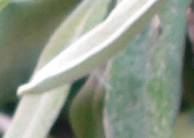
Plant Attributes:
Plant Type:
SA Distribution:
Soil type:
Flowering season:
PH:
Flower colour:
Aspect:
Gardening skill:
Special Features:
Horticultural zones

Polystichum Roth
Family:
Common names: shield ferns
Species
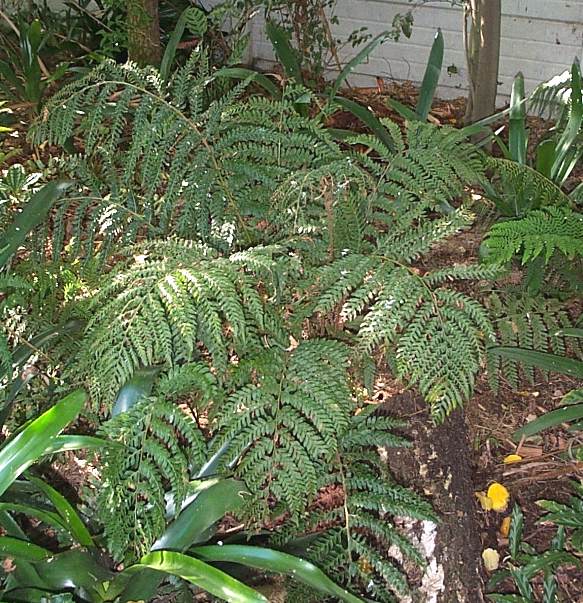
Polystichum incongruum: forest shield fern (Eng.); woud skildvaring (Afr.)
This species is confined to the Western and Eastern Cape in South Africa, occurring at elevations ranging between 600 and 1 350 m. Although it mostly occur in forests, it is not confined to them, often forming large stands on road cuttings. As a result of the decumbent and branched rhizome, the species has a shrub-like growth form, reaching a height of up to 0.8 m. The leathery dark green, erect to arching leaves may reach a length of up to 1.8 m, and can be up to 3 times divided. The species is best cultivated in moist, shaded conditions, although it will tolerate some sun once it is well established and the growing medium is kept adequately irrigated. Propagation is best done by rhizome division.
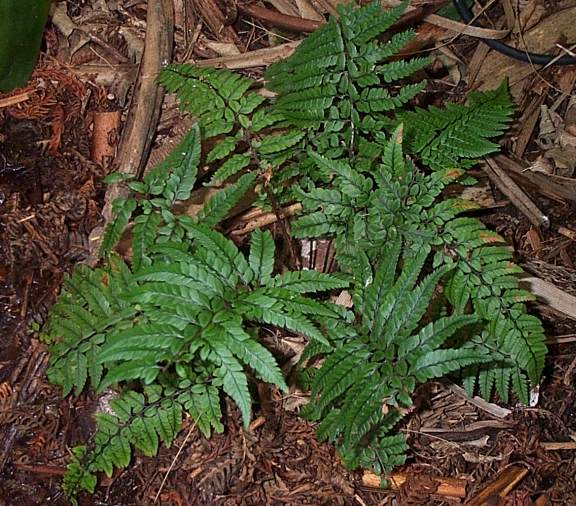
Polystichum luctuosum: mourning shield fern (Eng.); treur skildvaring (Afr.)
The species has a wide distribution in the Old World, extending as far as Japan. It is also widely distributed in South Africa, occurring from the Eastern Cape through KwaZulu-Natal to the north-eastern parts of the Free State, Mpumalanga and the Northern Province. It grows at elevations ranging between 760 and 1 740 m. The species is confined to evergreen forests where it grows on the forest floor or on rocks. P. luctuosum is often sold as P. tsus-simense and is a predominantly single-stemmed species resulting in a tussock-like growth. It can reach a height of up to 0.4 m. This smaller species has a very neat appearance, and is characterised by the almost black scales and dark veins, which contrast with the olive-green leaves. It is best cultivated in shade and needs to be kept moist, but not wet, at all times. It is a slow grower. Propagate by spores.
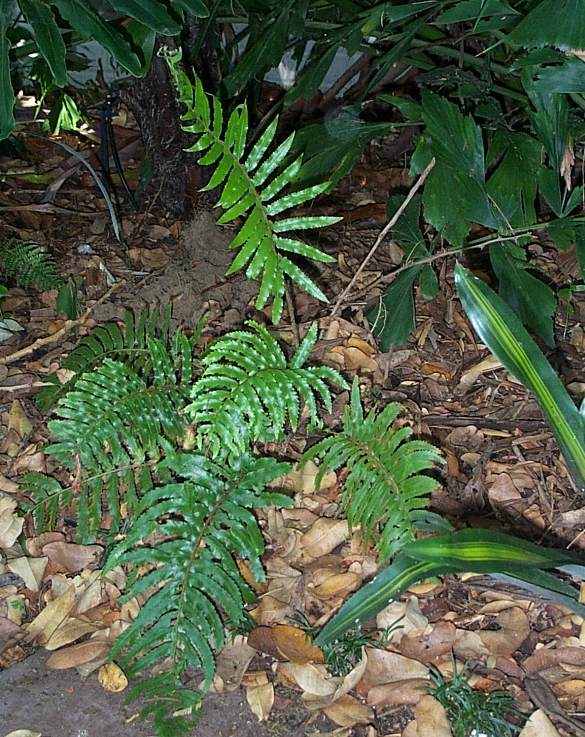
Polystichum macleae: McLea's shield fern (Eng.); oostelike skildvaring (Afr.)
Polystichum macleae is confined to the Drakensberg Escarpment and Wolkberg in Mpumalanga, occurring at elevations ranging between 1 350 and 1 960 m. It usually occurs in evergreen forests, but at higher elevations it is also found in the lee of large boulders. As a result of the decumbent, sparsely branched rhizome, it often forms small clonal stands resulting in a shrubby growth form. This is the only South African species with 1-pinnate leaves. They are mid- to dark green and can grow up to 1.5 m long. This very attractive species is worthy of cultivation. The species is best cultivated in light shade and requires permanently moist conditions. Propagate by rhizome division.
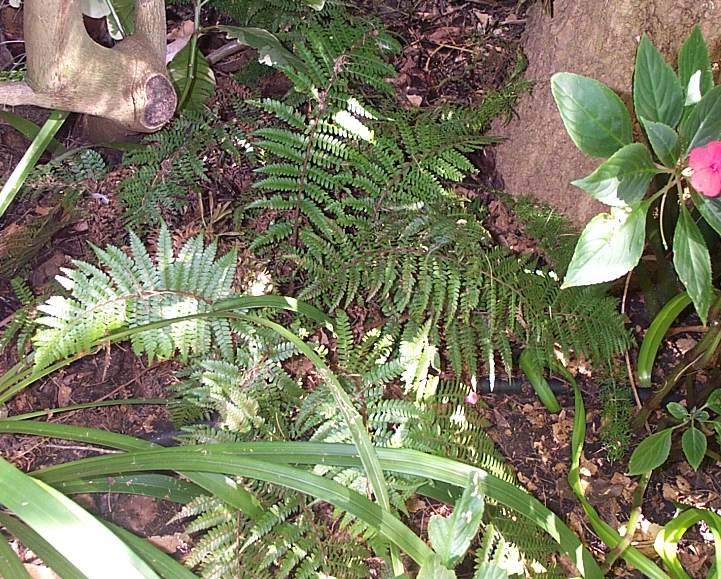
Polystichum monticola: mountain shieldfern (Eng.); berg skildvaring (Afr.)
Polystichum monticola is confined to South Africa, extending from the Kamiesberg in the Northern Cape, through the Western and Eastern Cape, KwaZulu-Natal and the Free State, to Lesotho, occurring from 600 to 2 740 m. The habitat includes seasonally moist, evergreen forests, rock crevices, cliff bases, stream banks, and forest margins, often growing in exposed, seasonally xeric conditions. The rhizome is decumbent and closely branched, resulting in plants forming a shrubby growth form. This variable and predominantly high altitude species is ideally suited for garden cultivation. The arching leaves are mid-green in colour and up to 0.8 m long. Although the species will tolerate some sun once well established, it is best cultivated in moist conditions in light shade. The species is slow-growing, and propagation is best done by rhizome division.

Polystichum pungens: forest shield fern (Eng.); woud skildvaring (Afr.)
Polystichum pungens is restricted to South Africa and Swaziland. In this region it ranges from Table Mountain, along the southern mountain ranges, and the Drakensberg foothills to the Wolkberg in Mpumalanga. It occurs at elevations ranging from 600 to 1 350 m and is restricted to forests. The rhizome is decumbent and regularly branched, resulting in the plants forming clonal stands and a shrubby growth form. The leathery leaves can be up to 1 m long, are dark green, and suberect to arching. The species is best cultivated in moist shaded conditions, but will tolerate morning sun once well established. Propagate by rhizome division.

Polystichum transvaalense: stemmed shieldfern (Eng.); enkelstam skildvaring (Afr.)
Polystichum transvaalense is widely distributed in temperate and tropical Africa. In South Africa it occurs from the Drakensberg foothills in the Eastern Cape along the KwaZulu-Natal Drakensberg escarpment, the Eastern Cape and southern KwaZulu-Natal midlands, the Free State/KwaZulu-Natal and Mpumalanga/Limpopo Province escarpment to the Soutpansberg, with outlying populations in the southern Cape mountains. It occurs at altitudes ranging from 365 to 1 840 m and is confined to forests. It has a short, erect, usually unbranched rhizome and a tussock-like growth form. In suitable conditions the suberect to arching pale- to mid-green leaves may be up to 1 m long. The species is suited to be used as a focal point in smaller gardens and should best be cultivated in light shade, preferring moist conditions. The species is worthy of cultivation because of its neat appearance. Propagate from spores.
Plant Attributes:
Plant Type:
SA Distribution:
Soil type:
Flowering season:
PH:
Flower colour:
Aspect:
Gardening skill:
Special Features:
Horticultural zones

Oscularia deltoides (L.) L.Bolus
Family:
Common names: dassievygie, sandsteenvygie (Afr.)
Plant Attributes:
Plant Type:
SA Distribution:
Soil type:
Flowering season:
PH:
Flower colour:
Aspect:
Gardening skill:
Special Features:
Horticultural zones

Oscularia piquetbergensis (L.Bolus) H.E.K.Hartmann
Family:
Common names: dassievygie, sandsteenygie (Afr.)
Plant Attributes:
Plant Type:
SA Distribution:
Soil type:
Flowering season:
PH:
Flower colour:
Aspect:
Gardening skill:
Special Features:
Horticultural zones

Oscularia caulescens (Mill.) Schwantes
Family:
Common names: dassievygie, sandsteenvygie (Afr.)
Plant Attributes:
Plant Type:
SA Distribution:
Soil type:
Flowering season:
PH:
Flower colour:
Aspect:
Gardening skill:
Special Features:
Horticultural zones

Oncosiphon suffruticosum (L.) Källersjö
Family:
Common names: stinkingweed (Eng.); stinkkruid, wurmkruid, wurmbos, miskruid (Afr.); Calomba daisy (Australia), shrubby mayweed (USA).
Plant Attributes:
Plant Type:
SA Distribution:
Soil type:
Flowering season:
PH:
Flower colour:
Aspect:
Gardening skill:
Special Features:
Horticultural zones






Rate this article
Article well written and informative
Rate this plant
Is this an interesting plant?
Login to add your Comment
Back to topNot registered yet? Click here to register.